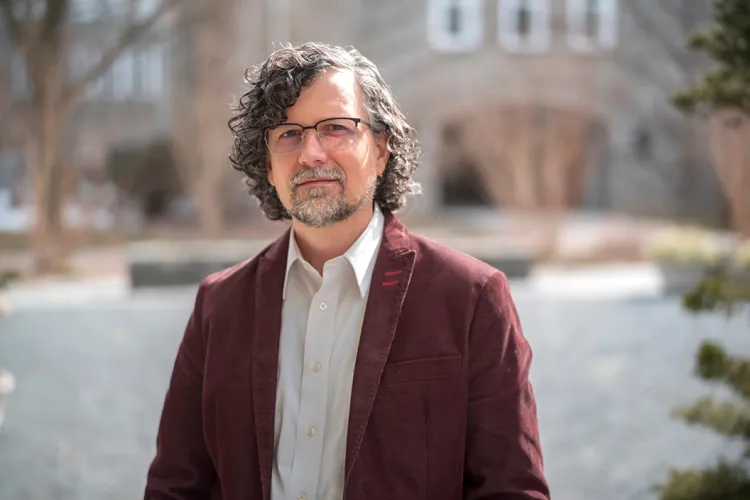Homicide Database Paints a Fuller Picture of Gun Violence in Delaware County

“One of the most rewarding things about this project has been getting connected with gun violence prevention groups,” says Professor of Peace & Conflict Studies and Sociology Lee Smithey.
It’s considered an epidemic in the U.S., accounting for nearly 20,000 deaths in 2020 alone, as it tears through communities and tears families apart, especially in low-income and urban areas.
Yet unlike the global pandemic, this public health issue — gun violence — receives relatively little public attention, aside from the high-profile mass shootings that dominate headlines. And specific details about these crimes can also be hard to come by, making it difficult for advocates to get the support their communities need.
Working to fill in those gaps, Swarthmore students have developed an interactive map that tracks all gun deaths in the College’s surrounding communities. Created under the guidance of Professor of Peace & Conflict Studies and Sociology Lee Smithey, the Delaware County (Pennsylvania) Homicide Database aims to assist in the prevention of gun violence while telling a fuller story of the effects of firearms.
The project is a peacebuilding effort in partnership with local anti-violence groups, says Smithey, who is also coordinator of the Peace & Conflict Studies Program. Although crime statistics are readily available from law enforcement agencies, he says, they are rarely presented in a way that’s easy for the public to process. By utilizing the College’s technological and scholarly resources, the students served as research assistants for these community groups, supporting them in their advocacy.
“One of the most rewarding things about this project,” Smithey says, “has been getting connected with gun violence prevention groups,” including Delaware County United for Sensible Gun Policy, co-founded by Robin Lasersohn ’88 and her husband, Terry Rumsey, and Women of Strength United for Change. “We felt it was important to learn from others who have been working locally on this problem.”
For the database, students downloaded homicide information from the FBI’s Uniform Crime Report and then cross-checked their findings against local news reports to glean further details about each case, such as victims’ names and where the shootings happened. Database users can search gun deaths in Delaware County going back to 2005, while filtering by such demographics as victims’ age, sex, and race, and applying map overlays including median income per area.
The database was developed over five nonconsecutive semesters as part of Smithey’s Gun Violence Prevention course, which explores firearms from the perspective of public health, policy, law enforcement, advocates, and even gun enthusiasts. Community partners and survivors of gun violence are frequent guest speakers in the course, often sharing how they’ve been personally affected by firearms.
“For me, the course was really about humanizing both the living and, unfortunately, deceased victims of gun violence,” says Aleina Dume ’23, a sociology and educational studies major from Queens, N.Y. One speaker, Beverly Wright — a mother from Chester who lost her son to gun violence — made a particular impact on Dume: “Hearing her story but also about her grassroots activism really helped me remember that these are lives that we’re entering into this database,” she says. “We might not know this person's name, but that just speaks to how important the work is.”
After consulting with community members like Wright, Smithey’s students decided against using pinpoints for each death in the database, so as not to reduce each victim to a statistic. Instead, the information is presented as a heat map, with areas growing more saturated in color as the number of cases increases.
“When I look at that map, I probably tend to see it as a sociologist first, and I start thinking about proximity to the interstate, the income level in these various neighborhoods, etc.,” Smithey says. But for residents of areas where gun violence is prevalent, he says, “they see a mosaic of stories and individuals and people, and they know that many of these homicide events are related to one another. It opened our eyes to how this is going to tell a different story to different people.”
Smithey expects the database to be useful not only to violence-prevention groups, but also to trauma surgeons, public health workers, and local governments. The ultimate hope is for the database to raise awareness of gun violence, while helping communities make gains in combating the epidemic.
“I wrote a paper relating gun violence to the coronavirus because that’s exactly what it is: a public health crisis,” says Oliver Hicks ’22, a political science and peace & conflict studies major from San Luis Obispo, Calif. “Our gun violence problem is not limited to just the school shootings that have perversely normalized themselves in news headlines — it’s so much more.”



